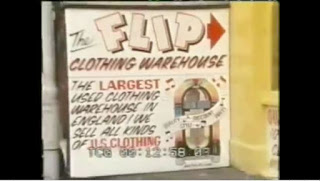I visited the UK just before Christmas - my flight was on election day. I was dreading more-or-less every possible outcome of the election, but when I heard the result I felt a surprising sense of relief. I say sense, although it made no sense at all. I have been unhappy about Brexit since the referendum. Over three years of trying to explain, trying to understand ...
I turned up to a party with old friends. Some of them staunch Labour supporters, others keen Brexiteers. But the result was hardly discussed. I could sense my feeling of relief amongst the entire company. No, it's not necessarily what we all would have wished for, but that wish would never have been granted. There were no fights, no name-calling. We'll all still be friends at the turn of the next decade.
I was reminded of what I read in Most Contagious - in the preface, the Editorial Director, Alex Jenkins, says: So, if we can't predict the future, how can we prepare for the next decade? My advice is to hang onto this word: reconcile ... I believe that the people and the brands that will be successful in the next decade are the ones that can reconcile.
It's about changing the vs. to an and.
Digital and traditional
Computers and humans
Short-term activation and brand-building
When I returned to social media, it was all still there: vile name-calling for those that have another opinion, people expressing their distress and feeling of betrayal at the election result (often on the behalf of less-fortunate others who probably voted in the opposite direction), crude generalisations and plenty of prancing around on high horses. It all seemed so yesterday, so dated.
I wonder if one consequence of digitalisation is that our brains have become digital? When you look at an analogue clock, it's an analogy or representation of the passage of time. The infinite possibilities and the exact time now are viewable at a glance. All possible times can be seen, and they co-exist as a harmonious whole.
But a digital clock just gives you one time - now. You can't see the spread or scope. It's a "single version of the truth" and if you don't agree, you must be stupid. Or ill-informed. Or misled by enemy propaganda. Or in some foreign country where they do things differently.
Now, have I fallen into my own trap with analogue and digital? Quite possibly - and that's another area where there should be no vs, only coexistence.
The last 20s were roaring. I'm hoping the coming 20s will roar with reconciliation and resound with the things that bind and unite us.
GOING FORWARD – MORE PROOF
2 years ago
























































